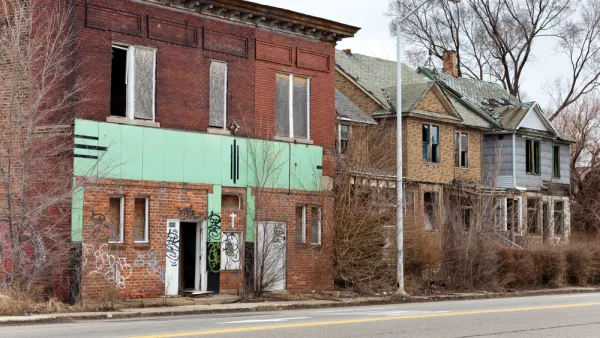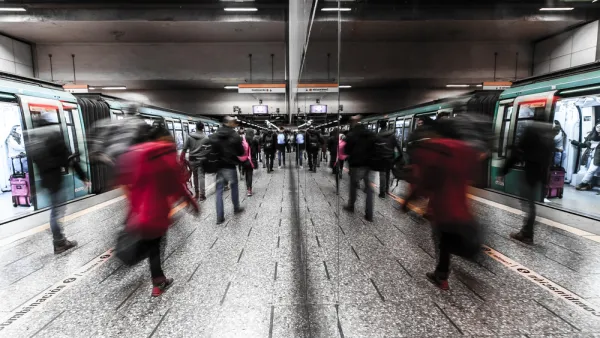While the vast majority of cities saw an increase—or no decrease—in neighborhood inequality since 1990, nearly 30 regions became more equal. But paper equality can be problematic when the rich simply up and left town.

The Urban Institute's Rolf Pendall discusses results from his recent study of neighborhood inequality rates between 1990 and 2010. As one might guess, most regions fared poorly. "But there are exceptions to every rule: in 29 of the nation's 214 commuting zones (CZs) with over 250,000 residents, neighborhood inequality went down from 1990 to 2010."
However, only in some areas did incomes actually rise across the board. "In 21 CZs, inequality fell because of shared growth, with income rising significantly in both top and bottom neighborhoods. [...] In eight CZs, inequality dropped because economic restructuring undermined the regional economies to such an extent that middle- and upper-income households either left town, retired, or took pay cuts."
Self-segregation by the rich results in segregated poverty, and, perversely, regional equality. Pendall says we need more diverse metrics to evaluate economic outcomes. He asks, "Do places and nations prevent or reduce material hardship? Do they foster economic mobility over the life course and generations? Do they assure the economic security of people who are just getting by and resilience for those whose lives are disrupted?"
FULL STORY: Is falling inequality always a good thing?

National Parks Layoffs Will Cause Communities to Lose Billions
Thousands of essential park workers were laid off this week, just before the busy spring break season.

Retro-silient?: America’s First “Eco-burb,” The Woodlands Turns 50
A master-planned community north of Houston offers lessons on green infrastructure and resilient design, but falls short of its founder’s lofty affordability and walkability goals.

Delivering for America Plan Will Downgrade Mail Service in at Least 49.5 Percent of Zip Codes
Republican and Democrat lawmakers criticize the plan for its disproportionate negative impact on rural communities.

Test News Post 1
This is a summary

Test News Headline 46
Test for the image on the front page.

Balancing Bombs and Butterflies: How the National Guard Protects a Rare Species
The National Guard at Fort Indiantown Gap uses GIS technology and land management strategies to balance military training with conservation efforts, ensuring the survival of the rare eastern regal fritillary butterfly.
Urban Design for Planners 1: Software Tools
This six-course series explores essential urban design concepts using open source software and equips planners with the tools they need to participate fully in the urban design process.
Planning for Universal Design
Learn the tools for implementing Universal Design in planning regulations.
EMC Planning Group, Inc.
Planetizen
Planetizen
Mpact (formerly Rail~Volution)
Great Falls Development Authority, Inc.
HUDs Office of Policy Development and Research
NYU Wagner Graduate School of Public Service




























